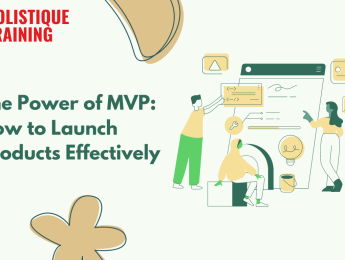- Table of Contents
- Introduction
- Understanding Quality Management
- The 7 Principles of Quality Management
- Customer Focus:
- Leadership:
- People Engagement:
- Process Approach:
- Continuous Improvement:
- Evidence-Based Decision Making:
- Relationship Management:
- The 4 Components of Quality Management
- Quality Planning:
- Quality Control:
- Quality Assurance:
- Quality Improvement:
- Different Quality Management Methods
- Standardised Systems:
- Total Quality Management (TQM):
- Table: Comparison of the different quality management methods
- Six Sigma:
- Continuous Quality Improvement (CQI):
- Benefits of Quality Management
- Enhanced Customer Satisfaction
- Improved Operational Efficiency
- Increased Market Share
- Better Risk Management
- Greater Employee Engagement
- Compliance with Regulations
- Improved Supplier Relationships
- Enhanced Brand Reputation
- ISO Standards and Quality Management
- What Is ISO?
- ISO 9001: Quality Management System
- Benefits of ISO 9001:
- Implementing ISO 9001:
- Integration with Other ISO Standards:
- Continuous Improvement:
- Example of Effective Quality Management
- In Conclusion
Introduction
Quality management is not just a buzzword in today's competitive business environment; it's a cornerstone of success and sustainability. At its core, quality management encompasses a set of principles, methods, and practices aimed at ensuring that products and services consistently meet or exceed customer expectations. By implementing robust quality management systems, organisations can enhance customer satisfaction, improve operational efficiency, and drive continuous improvement across all facets of their operations.
Understanding Quality Management
Quality management can be defined as a systematic approach to overseeing and controlling all aspects of production and service delivery to ensure consistent, high-quality results. It involves a comprehensive understanding of customer requirements and expectations, as well as the establishment of processes and procedures to meet those standards effectively.
The 7 Principles of Quality Management
Quality management principles provide a framework for organisations to operate effectively and efficiently while consistently meeting customer expectations. These principles, established by the International Organization for Standardization (ISO), serve as fundamental guidelines for developing and implementing quality management systems across industries. Here's a detailed exploration of each principle:
Customer Focus:
At the heart of quality management lies a deep understanding of customer needs, both current and future. Organisations must actively gather and analyse customer feedback to identify expectations, preferences, and emerging trends. Companies can align their strategies, products, and services to deliver maximum value by placing the customer at the centre of decision-making processes. This principle emphasises the importance of building strong customer relationships, fostering loyalty, and driving continuous improvement based on customer insights.
Leadership:
Effective leadership is essential for establishing and sustaining a quality-focused culture within an organisation. Leaders set a clear vision and goals aligned with customer needs and organisational objectives. They provide direction, resources, and support to empower employees at all levels to contribute effectively to quality initiatives. Leadership commitment to quality management encourages accountability, fosters innovation, and promotes a collaborative environment where quality is prioritised across all functions.
People Engagement:
Engaged and competent employees are invaluable assets in achieving quality objectives. Organisations should invest in training and development programs to enhance employees' skills, knowledge, and understanding of quality standards. Empowered employees are more likely to take ownership of their roles, contribute to process improvements, and innovate solutions to enhance product and service quality. People engagement extends beyond internal teams to include suppliers, partners, and stakeholders, fostering collaborative relationships built on trust and mutual respect.
Process Approach:
Adopting a process approach involves understanding and managing interrelated activities as a system that contributes to the organisation's effectiveness and efficiency in achieving its objectives. By mapping and analysing processes, organisations can identify opportunities for improvement, streamline operations, and eliminate redundancies. A systematic approach to process management ensures consistency in outputs, reduces errors, and enhances overall performance. Continuous monitoring and evaluation of processes enable organisations to adapt swiftly to changes and maintain high standards of quality.
Continuous Improvement:
Continuous improvement is a fundamental principle that drives organisational growth and innovation. By embracing a culture of ongoing enhancement, organisations strive to incrementally improve products, services, and processes. Techniques such as Kaizen (continuous incremental improvements), Lean Six Sigma (data-driven problem-solving methodologies), and Total Quality Management (holistic approach to quality) empower teams to identify root causes of inefficiencies, implement corrective actions, and measure results. Continuous improvement fosters adaptability, resilience, and responsiveness to evolving market demands and customer expectations.
Evidence-Based Decision Making:
Data-driven decision-making involves gathering and analysing relevant data to inform strategic and operational decisions. Organisations should establish reliable data collection methods, performance metrics, and key performance indicators (KPIs) to measure progress towards quality objectives. By leveraging data analytics and statistical tools, leaders can make informed decisions that mitigate risks, optimise resources, and drive sustainable improvements. Evidence-based decision-making promotes transparency, accountability, and confidence in achieving desired outcomes aligned with customer requirements.
KPIs | Description | Measurement Frequency |
Customer Satisfaction | Measure of customer perception and feedback | Quarterly |
Defect Rate | Percentage of products/services with defects | Monthly |
On-time Delivery Rate | Percentage of orders delivered on time | Weekly |
Internal Audit Findings | Number of non-conformities found internally | Bi-annually |
Process Efficiency | Efficiency of processes in achieving goals | Monthly |
Table: KPIs to measure progress towards quality objectives
Relationship Management:
Building and nurturing positive relationships with stakeholders, including suppliers, partners, and regulators, is essential for sustained success. Effective relationship management involves understanding stakeholder expectations, fostering open communication channels, and collaborating on shared goals. By establishing mutually beneficial partnerships based on trust and integrity, organisations can leverage collective strengths, manage risks proactively, and drive innovation. Strong relationships contribute to a cohesive supply chain, regulatory compliance, and continuous improvement initiatives that enhance overall business performance.
These principles form the foundation of quality management systems, guiding organisations in their quest for excellence, customer satisfaction, and continuous improvement. By embracing these principles, organisations can build resilience, enhance competitiveness, and achieve sustainable growth in dynamic and challenging business environments.
The 4 Components of Quality Management
Quality management involves a systematic approach to ensuring that products, services, and processes consistently meet or exceed customer expectations. These components outline essential elements that organisations integrate to achieve and maintain high standards of quality:
Quality Planning:
Quality planning encompasses the process of defining quality objectives and identifying the necessary resources, processes, and responsibilities required to meet customer requirements effectively. It begins with understanding customer needs and expectations through market research, feedback analysis, and benchmarking against industry standards. Organisations develop quality plans that outline specific goals, performance metrics, and timelines for achieving desired outcomes. Key activities include:
- Setting Objectives: Establishing clear, measurable quality objectives aligned with organisational goals and customer expectations.
- Resource Allocation: Allocating resources such as human capital, technology, and infrastructure to support quality initiatives.
- Risk Assessment: Identifying potential risks and developing mitigation strategies to prevent quality deviations.
- Documentation: Documenting quality plans, procedures, and specifications to guide implementation and ensure consistency.
By proactively planning for quality, organisations can minimise risks, optimise resource utilisation, and enhance overall operational efficiency.
Quality Control:
Quality control focuses on the operational techniques and activities used to monitor, evaluate, and regulate processes to ensure that products and services meet defined quality standards. It involves systematic inspection, testing, and measuring outputs against predetermined specifications and benchmarks. Key components of quality control include:
- Inspection and Testing: Conducting inspections and tests at various stages of production or service delivery to identify defects, deviations, or non-conformities.
- Statistical Process Control (SPC): Using statistical tools and methods to monitor process performance and variability, enabling timely corrective actions.
- Root Cause Analysis: Investigating underlying causes of quality issues to implement corrective and preventive measures.
- Quality Audits: Conducting periodic audits to assess compliance with quality standards, procedures, and regulatory requirements.
Quality control ensures product and service quality consistency, reduces variability, and enhances customer satisfaction by delivering reliable and defect-free outputs.
Quality Assurance:
Quality assurance encompasses planned and systematic activities implemented within the quality management system to provide confidence that products and services will fulfil specified requirements consistently. It focuses on preventing defects rather than detecting them after production. Key elements of quality assurance include:
- Process Documentation: Developing and maintaining documented procedures, work instructions, and quality manuals to standardise processes and ensure adherence to standards.
- Training and Competence: Providing training and development opportunities to enhance employee skills, knowledge, and understanding of quality requirements.
- Quality Reviews: Conducting reviews and evaluations of processes, procedures, and systems to identify opportunities for improvement.
- Management Review: Periodic review by management to assess the effectiveness of the quality management system, review performance data, and allocate resources for improvement initiatives.
By embedding quality assurance practices into organisational culture and operations, companies establish a framework for continual improvement, risk management, and compliance with regulatory standards.
Quality Improvement:
Quality improvement involves systematic actions taken to enhance the performance and capabilities of processes, products, and services. It identifies opportunities for innovation, efficiency gains, and customer satisfaction improvement. Key aspects of quality improvement include:
- Continuous Improvement (Kaizen): Encouraging employees at all levels to contribute ideas for process enhancement and waste reduction.
- Benchmarking: Comparing organisational practices, performance metrics, and outcomes against industry leaders or best-in-class standards.
- Innovation and Research: Investing in research and development to innovate products, services, and processes that exceed customer expectations.
- Feedback Loops: Establishing mechanisms for collecting and analysing customer feedback to identify areas for improvement and implement corrective actions.
Quality improvement initiatives foster a culture of innovation, responsiveness, and adaptability, driving sustained competitive advantage and customer loyalty.
These four components form the backbone of effective quality management systems, enabling organisations to deliver consistent quality, enhance operational efficiency, and achieve strategic objectives aligned with customer needs and market demands. By integrating these components into their operations, companies can continuously improve processes, mitigate risks, and foster a culture of excellence and customer satisfaction.
Different Quality Management Methods
Quality management encompasses various methodologies and systems designed to improve organisational processes, enhance product and service quality, and achieve customer satisfaction. Each method offers unique approaches and tools to address specific challenges and opportunities for improvement. Here's an in-depth exploration of some prominent quality management methods:
Standardised Systems:
Standardised systems provide frameworks and guidelines for establishing, implementing, maintaining, and continually improving quality management practices. One of the most widely adopted standards isISO 9001, which sets out the criteria for a quality management system based on principles such as customer focus, leadership, and continuous improvement. Organisations certified to ISO 9001 demonstrate their ability to consistently provide products and services that meet customer and regulatory requirements.
Key Features:
- Emphasis on process approach and systematic planning.
- Documentation of procedures and processes to ensure consistency.
- Regular audits and reviews to monitor compliance and effectiveness.
- Continuous improvement through corrective and preventive actions.
Implementing ISO 9001 enhances operational efficiency and boosts credibility, competitiveness, and customer confidence in the organisation's ability to deliver quality products and services.
Total Quality Management (TQM):
Total Quality Management is a holistic approach to quality that involves all employees in continuous improvement efforts to enhance organisational performance, customer satisfaction, and profitability. TQM emphasises the importance of customer focus, process improvement, and teamwork to achieve long-term success.
Key Principles:
- Customer Focus: Meeting and exceeding customer expectations.
- Continuous Improvement: Iterative process enhancements and innovation.
- Employee Involvement: Empowering employees to contribute ideas and solutions.
- Process Excellence: Streamlining operations to eliminate waste and improve efficiency.
By integrating TQM principles into organisational culture and operations, companies foster a commitment to quality at all levels, leading to improved product quality, reduced costs, and enhanced customer loyalty.
Table: Comparison of the different quality management methods
Six Sigma:
Six Sigma is a data-driven methodology focused on minimising defects and variations in processes to achieve consistent, measurable results. It combines statistical analysis with disciplined problem-solving approaches to identify root causes of quality issues and implement effective solutions.
Key Methodologies:
- Define: Clearly articulate project goals and customer requirements.
- Measure: Quantify process performance and collect relevant data.
- Analyse: Identify root causes of defects and process variations.
- Improve: Implement solutions to optimise processes and enhance quality.
- Control: Sustain improvements through monitoring and continuous evaluation.
Six Sigma methodologies, typically categorised into belts (e.g., Green Belt, Black Belt), empower organisations to drive quality improvements, reduce costs, and achieve operational excellence across diverse industries.
Continuous Quality Improvement (CQI):
Continuous Quality Improvement focuses on ongoing efforts to enhance products, services, and processes based on feedback, data analysis, and stakeholder engagement. CQI encourages organisations to adapt to changing market dynamics, customer needs, and technological advancements.
Key Strategies:
- Kaizen: Incremental improvements and waste reduction through employee involvement.
- Lean Principles: Eliminating waste, optimising resources, and improving process flow.
- Agile Methodologies: Iterative development and rapid response to customer feedback.
By embracing CQI principles, organisations foster a culture of innovation, responsiveness, and adaptability, driving sustained improvements in quality, efficiency, and customer satisfaction.
These quality management methods offer diverse approaches to achieving excellence and operational effectiveness. Organisations can select and tailor these methodologies according to their specific needs, industry requirements, and strategic objectives to foster continuous improvement, customer satisfaction, and long-term success. Integrating these methods into organizational practices enables proactive quality management, enhances competitive advantage, and promotes sustainable growth in dynamic and challenging business environments.
Benefits of Quality Management
Quality management is a strategic approach that organisations adopt to ensure consistency, efficiency, and customer satisfaction across their operations. By implementing robust quality management practices, companies can realise a wide range of benefits contributing to their overall success and competitiveness in the marketplace. Here are key benefits of quality management:
Enhanced Customer Satisfaction
Meeting and exceeding customer expectations is paramount to business success. Quality management focuses on understanding customer needs, delivering consistent quality products and services, and resolving issues promptly. By prioritising customer satisfaction, organisations build strong relationships, foster loyalty, and enhance their reputation in the marketplace.
Improved Operational Efficiency
Quality management systems streamline processes, reduce waste, and optimise resource utilisation. Organisations improve productivity and operational performance by identifying inefficiencies, eliminating bottlenecks, and standardisation procedures. Efficient operations lead to cost savings, shorter cycle times, and increased profitability.
Increased Market Share
Consistently delivering high-quality products and services enhances brand reputation and competitiveness. Satisfied customers are more likely to recommend and repeat business, attracting new clients and expanding market reach. Quality management strengthens market position and supports sustainable business growth.
Better Risk Management
Quality management systems include proactive measures to identify, assess, and mitigate risks related to product quality, operational processes, and regulatory compliance. By implementing rigorous quality controls, conducting regular audits, and fostering a culture of accountability, organisations minimise risks of defects, recalls, and non-compliance issues.
Greater Employee Engagement
Engaged employees are key drivers of quality and organisational success. Quality management encourages employee involvement in continuous improvement initiatives, decision-making processes, and problem-solving activities. Empowered employees feel valued, contribute innovative ideas, and take ownership of their roles, leading to higher morale, productivity, and retention rates.
Compliance with Regulations
Quality management systems help organisations comply with industry regulations, standards, and legal requirements. By adhering to established quality guidelines, conducting thorough inspections, and maintaining accurate documentation, companies demonstrate their commitment to quality, safety, and environmental responsibility.
Improved Supplier Relationships
Collaborative relationships with suppliers are essential to maintaining product quality and supply chain efficiency. Quality management fosters communication, transparency, and mutual trust with suppliers. By setting clear quality expectations, conducting supplier evaluations, and establishing quality agreements, organisations ensure consistent product inputs and reliable partnerships.
Enhanced Brand Reputation
Consistently delivering superior quality products and services enhances brand credibility and customer trust. A strong reputation for reliability, innovation, and customer satisfaction distinguishes organisations in competitive markets. Quality management reinforces brand values, fosters customer loyalty, and attracts new business opportunities.
By embracing quality management principles and investing in continuous improvement initiatives, organisations position themselves for sustained success, profitability, and long-term growth. The benefits extend beyond operational efficiency to encompass strategic advantages, market differentiation, and resilience in dynamic business environments.
ISO Standards and Quality Management
ISO (International Organization for Standardization) standards are crucial in shaping quality management practices globally. These standards provide frameworks and guidelines that organisations can adopt to ensure consistency, efficiency, and continual improvement in their products, services, and processes. Here’s an in-depth look at ISO standards and their impact on quality management:
What Is ISO?
ISO is an independent, non-governmental international organisation that develops and publishes international standards. These standards are designed to ensure products and services are safe, reliable, and of good quality. ISO standards cover various industries and disciplines, including quality management, environmental management, information security, and more.
ISO 9001: Quality Management System
ISO 9001 is the most widely recognised standard within the ISO 9000 family and focuses on quality management. It provides a framework for organisations to establish, implement, maintain, and continually improve a Quality Management System (QMS). Key principles of ISO 9001 include customer focus, leadership, engagement of people, process approach, improvement, evidence-based decision-making, and relationship management.
Benefits of ISO 9001:
- Enhanced Customer Satisfaction: By consistently meeting customer requirements and enhancing customer satisfaction.
- Improved Processes: By establishing efficient processes that minimise waste and errors.
- Increased Credibility: Through internationally recognized certification that demonstrates a commitment to quality.
- Better Decision Making: Based on data-driven insights and evidence.
Implementing ISO 9001:
Implementing ISO 9001 involves several steps, including:
- Gap Analysis: Assessing current processes and practices against ISO 9001 requirements.
- Documentation: Developing documented policies, procedures, and work instructions.
- Training: Providing training to employees on quality management principles and practices.
- Internal Audits: Conducting internal audits to evaluate compliance and identify areas for improvement.
- Certification: Seeking certification from accredited certification bodies to demonstrate conformity to ISO 9001 standards.
Integration with Other ISO Standards:
ISO 9001 can be integrated with other ISO standards, such as ISO 14001 (Environmental Management),ISO 27001 (Information Security Management), and ISO 45001 (Occupational Health and Safety), to create a unified management system. Integrated management systems streamline processes, reduce duplication of efforts, and enhance organisational efficiency and effectiveness.
Continuous Improvement:
ISO standards emphasise the importance of continual improvement. Organisations certified to ISO 9001 must monitor and measure performance, conduct regular management reviews, and take corrective actions to ensure ongoing conformity and effectiveness of their QMS. Continuous improvement fosters innovation, adaptability, and resilience in meeting evolving customer needs and market demands.
ISO standards, particularly ISO 9001, provide a structured approach for organisations to achieve operational excellence, enhance customer satisfaction, and maintain competitive advantage in the global marketplace. By aligning with ISO standards, companies demonstrate their commitment to quality, reliability, and continuous improvement, setting a foundation for sustainable growth and success.
Example of Effective Quality Management
Toyota Motor Corporation exemplifies effective quality management through its renowned Toyota Production System (TPS). TPS is a comprehensive approach to manufacturing that prioritises efficiency, waste reduction, and continuous improvement. Key principles such as Kaizen (continuous improvement), Jidoka (autonomation), and Just-in-Time (JIT) production are central to TPS. These principles enable Toyota to streamline operations, minimise waste, and deliver high-quality products consistently. By integrating Poka-Yoke (error-proofing) mechanisms and promoting total employee engagement through Quality Control Circles (QCCs), Toyota ensures that quality is built into every aspect of its operations. This commitment to quality enhances customer satisfaction and strengthens Toyota's competitive position in the global automotive industry.
Toyota's success in quality management is underscored by its rigorous supplier relationships, which ensure that components and materials meet stringent quality standards. Through continuous learning and adaptation, Toyota remains at the forefront of innovation, responding swiftly to market demands and maintaining its reputation for reliability and excellence.
In Conclusion
In conclusion, quality management is not just about meeting standards; it's about exceeding them consistently. By embracing the principles, methods, and benefits of quality management, organisations can foster a culture of excellence, innovation, and continuous improvement. Investing in quality management systems enhances customer satisfaction and operational efficiency and strengthens competitiveness and sustainability in the global marketplace.
For those looking to delve deeper into these practices and implement them effectively, our course, Quality Management Strategies, offers comprehensive insights and practical tools. This course covers essential principles, methodologies, and real-world applications, equipping you with the knowledge and skills to drive quality initiatives in your organisation. Join us to master the art of quality management and lead your organisation to new heights of excellence and success.

























